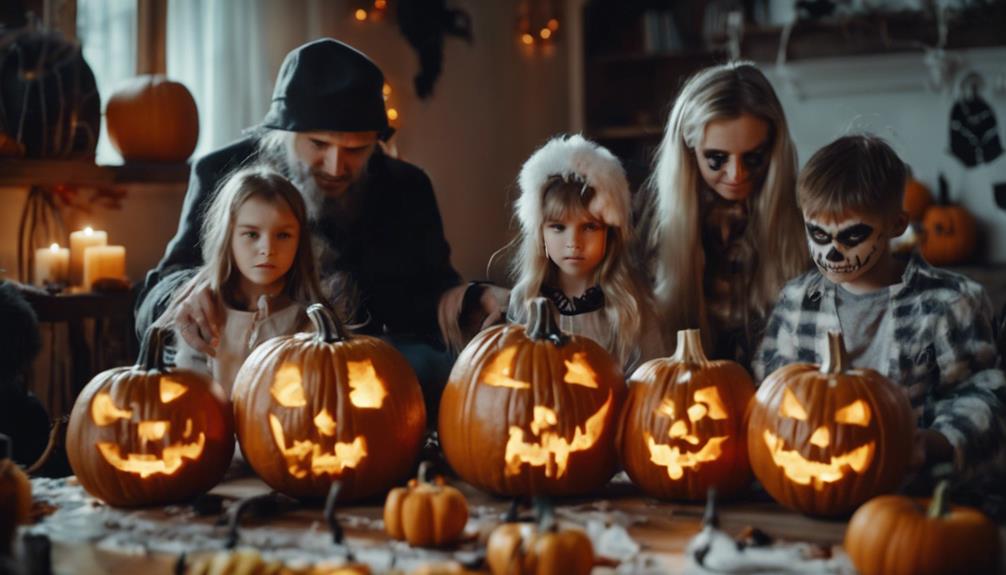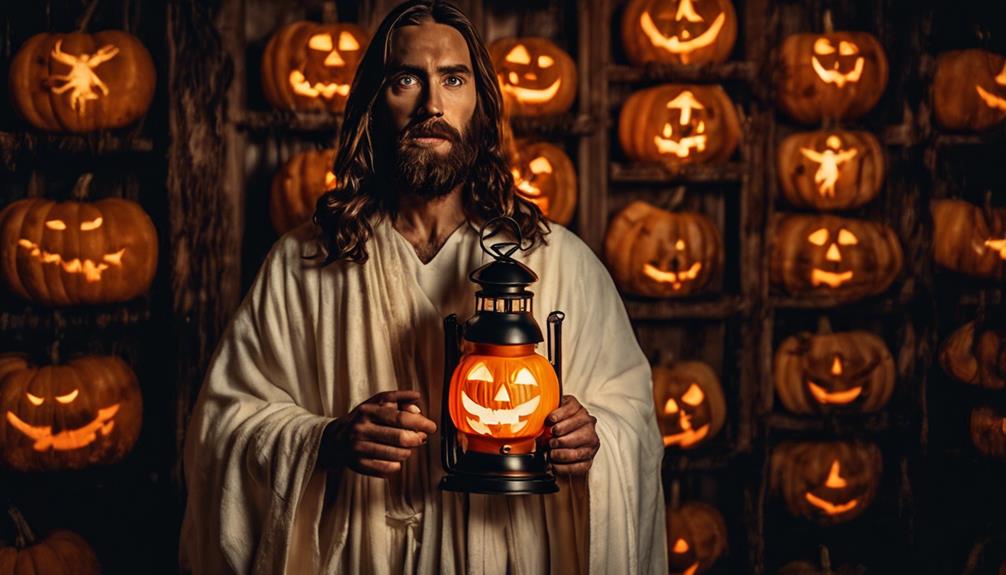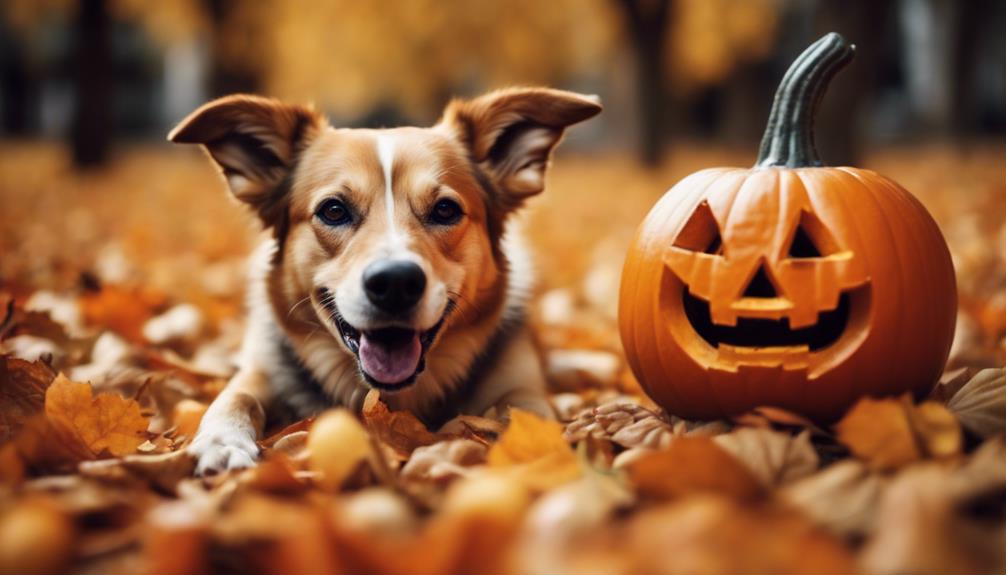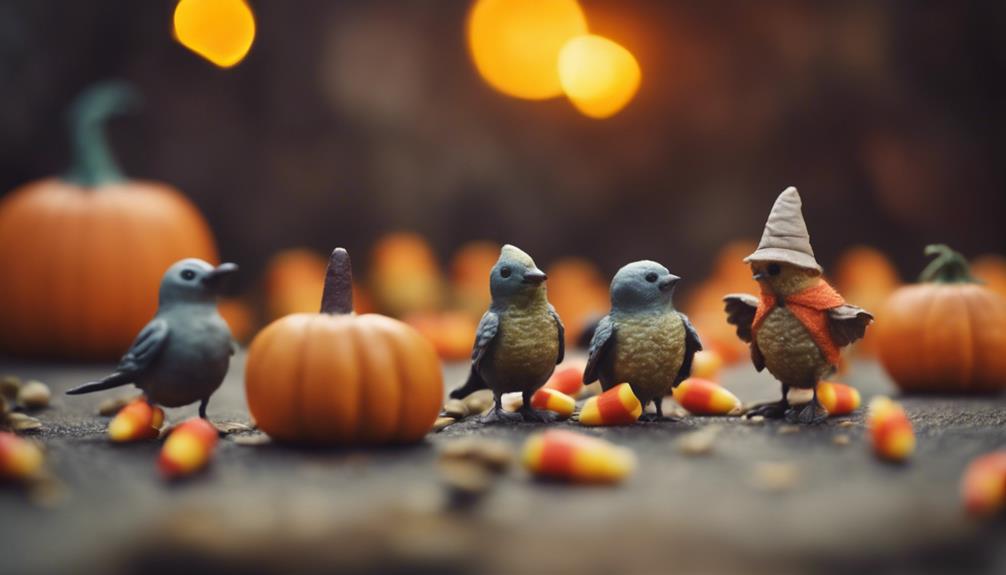Halloween has made its mark in Russia, adopted around two decades ago, influenced by American culture. Urban areas in Russia now partake in the festivities, marked by colorful costumes and vibrant decorations. Unique Russian elements have been woven into the celebrations, creating a blend of traditions. Costumes inspired by popular American movies and characters, along with pumpkin carving and spooky decorations, have become common sights. The celebrations emphasize socializing and themed events rather than traditional trick-or-treating. Stay tuned for a more in-depth exploration into the evolution and current state of Halloween in Russia.
Key Takeaways
- Halloween celebrations in Russia have evolved with American influences.
- Popular activities include costume parties, haunted houses, and pumpkin carving contests.
- Trick-or-treating is not widespread due to safety concerns and living arrangements.
- Some Russian officials and the Orthodox Church oppose Halloween as a threat to traditional values.
- Modern Russian Halloween celebrations focus on socializing, costumes, and decorations.
History of Halloween in Russia
About two decades ago, Halloween was introduced to Russia, influenced by American culture. This holiday, originally rooted in Celtic pagan traditions, made its way to Russian urban areas, where it began to gain popularity.
While not traditionally celebrated in Russia, Halloween has become a notable event marked by costumes, pumpkin carving, and festive decorations, mirroring Western customs. However, the practice of trick-or-treating isn't as prevalent in Russia due to varying living arrangements and safety concerns.
Despite its growing popularity, Halloween has faced opposition from some sectors of Russian society, including officials and the Orthodox Church, who view it as a potential threat to Russian identity and traditions. This resistance from certain quarters has sparked debates about the holiday's place in Russian culture and the extent to which it should be embraced or discouraged by the Russian government.
Influence of American Culture
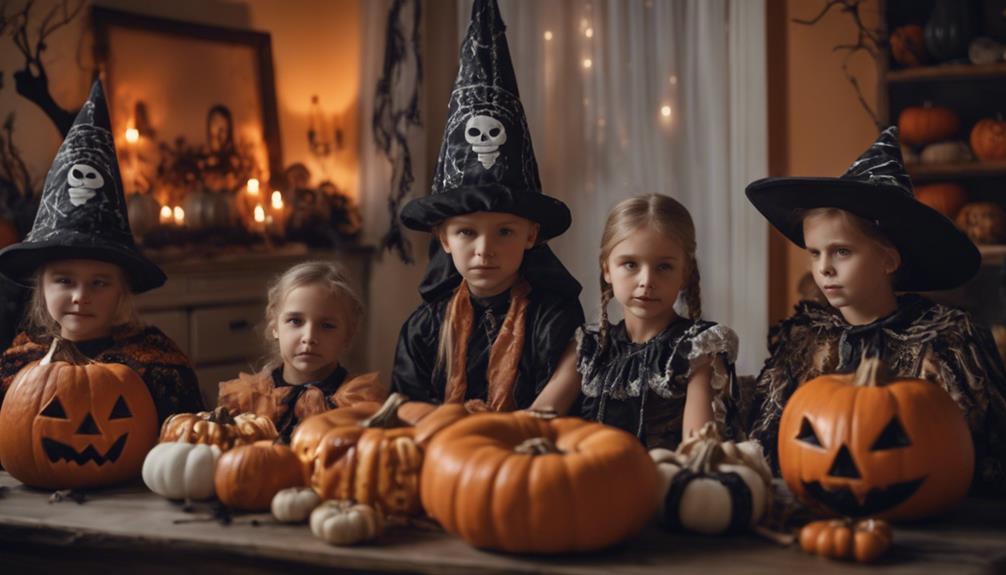
Due to the increasing influence of American culture in Russia, Halloween emerged in the country approximately two decades ago, introducing new traditions and celebrations to urban areas. This cultural exchange has greatly impacted how Russians perceive and celebrate this holiday.
The influence of American culture can be seen in various aspects of Halloween celebrations in Russia:
- Costumes: Russians have embraced the tradition of dressing up in elaborate costumes, often inspired by popular American movies and characters.
- Pumpkin Carving: Another American Halloween tradition that has made its way to Russia is pumpkin carving. People enjoy the creative process of turning pumpkins into spooky decorations for their homes.
- Decorations: American-style Halloween decorations, like cobwebs, skeletons, and witches, have become increasingly popular in Russian households during the Halloween season.
These elements reflect how American culture has shaped the way Halloween is celebrated in Russia, adding a touch of international flair to this traditionally Western holiday.
Popular Halloween Activities in Russia
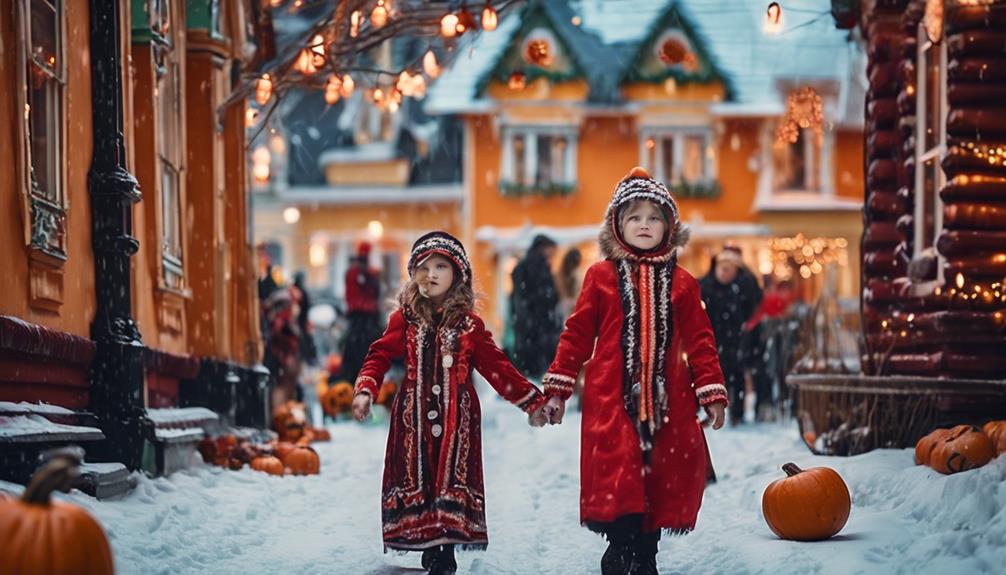
Popular Halloween activities in Russia encompass a diverse range of festive events and creative engagements for people of all ages. Russians celebrate Halloween with costume parties, haunted house experiences, and themed club events. Many also participate in pumpkin carving contests and attend Halloween-themed art exhibitions.
While trick-or-treating isn't as common in Russia, some neighborhoods organize candy giveaways for children. Moreover, numerous restaurants and cafes in major cities offer special Halloween menus and host spooky events to mark the traditional holiday. Additionally, schools and community centers across Russia organize Halloween-themed craft workshops and storytelling sessions for kids, adding to the array of activities available during this time of the year.
These varied celebrations showcase a blend of international influences and local creativity, making Halloween an increasingly popular and enjoyable occasion for many in Russia.
Trick-or-Treating in Russian Culture

Trick-or-treating, while a common practice in many Western countries during Halloween, isn't a prevalent tradition in Russian culture due to factors such as living arrangements and safety concerns. In Russia, Halloween celebrations tend to focus more on costumes, decorations, and socializing rather than the door-to-door practice of trick-or-treating. Here are some reasons why trick-or-treating isn't widely practiced in Russian culture:
- Living Arrangements: Russian living arrangements often involve apartment complexes where going door-to-door for trick-or-treating can be challenging due to the layout and security protocols in place.
- Safety Concerns: Concerns about safety, particularly in densely populated urban areas, contribute to the limited popularity of trick-or-treating as parents may be hesitant to let their children roam the streets at night.
- Cultural Emphasis: The Orthodox Christian influence in Russia also plays a role, with Halloween festivities leaning more towards themed parties, events, and gatherings rather than the traditional Western practice of trick-or-treating.
Opposition to Halloween Celebrations
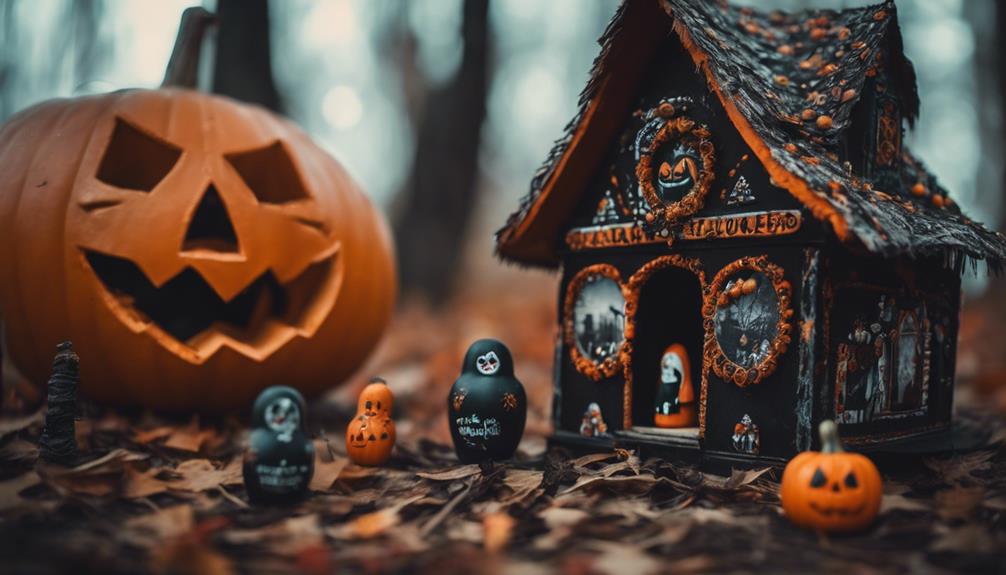
Some Russian officials have expressed opposition to Halloween, viewing it as a threat to Russian identity. This sentiment is echoed by some in the Russian Orthodox Church, who see Halloween as a rebellion against Russian spirit and tradition.
The debate surrounding Halloween reflects differing opinions on cultural identity and tradition in Russia. For some, Halloween is considered artificial and alien to Russian culture. Traditional Slavic holidays, on the other hand, offer insights into Russian cultural practices that share similarities with Halloween.
The clash between those who oppose Halloween celebrations and those who embrace them highlights the ongoing tension between preserving Russian cultural heritage and integrating foreign customs. The Russian Orthodox Church plays a significant role in shaping these discussions, emphasizing the importance of maintaining traditional values and practices to safeguard Russian identity.
As Halloween continues to gain popularity in Russia, the opposition to its celebrations underscores the complex dynamics at play regarding cultural acceptance and integration.
Cultural Acceptance and Integration
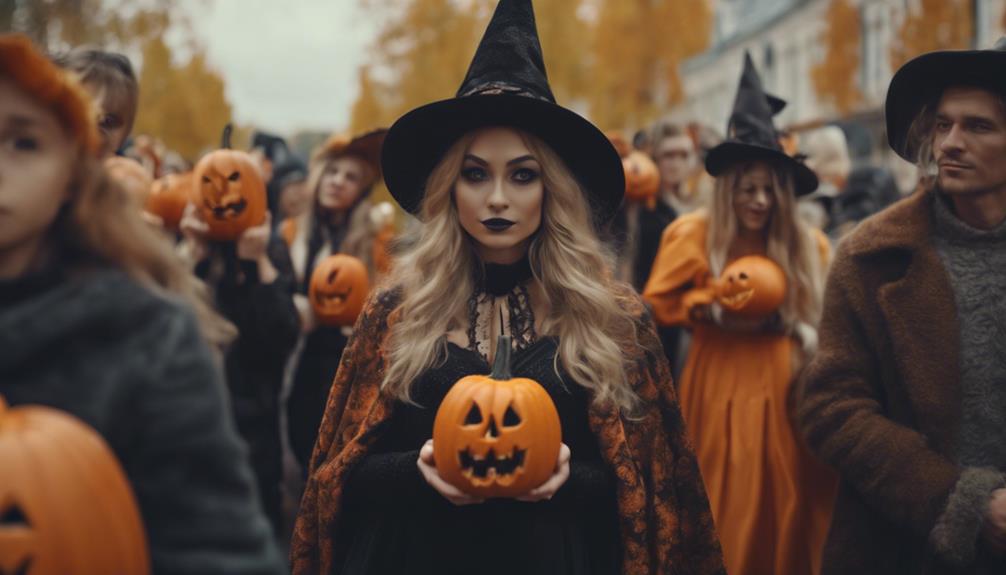
Cultural diversity in Russia is exemplified by the growing acceptance and integration of Halloween festivities, particularly in urban areas. This trend highlights the changing landscape of cultural acceptance in the country, with Halloween celebrations becoming more prevalent and embraced by the population.
Here are some key points to ponder regarding the celebration of Halloween and cultural acceptance in Russia:
- Multicultural Exchange: Celebrating Halloween in Russia is seen as part of a multicultural exchange, showcasing the country's openness to different traditions and customs.
- Positive Views: Some Russians have positive views on Halloween, appreciating the cultural exchange and the fun festive atmosphere it brings to communities.
- Integration: The integration of Halloween into Russian culture is viewed positively, with Halloween-themed events becoming increasingly common in major cities like Moscow and St. Petersburg. This integration reflects a broader acceptance of Western traditions and cultural influences in Russian society.
Russian Perspectives on Halloween
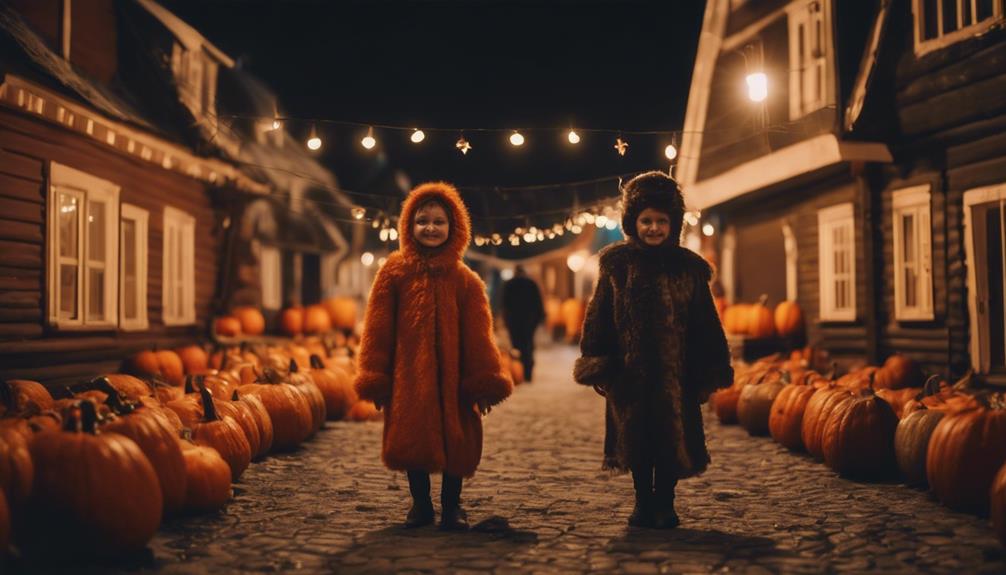
The evolving cultural landscape in Russia reveals varying perspectives on the celebration of Halloween, reflecting a broader shift towards embracing diverse traditions and influences. While Halloween is not a traditional Russian holiday, its popularity in urban areas has sparked a mix of reactions among the population. Some Russians view Halloween as a fun opportunity to engage in spooky activities and dress up in costumes, aligning with the festive spirit of the Christian holiday. On the other hand, certain officials and individuals with conservative or religious values express opposition to Halloween, preferring to focus on pumpkin-themed religious festivities instead. Despite this, the multicultural exchange present in Russia has led to growing acceptance and positive attitudes towards Halloween in some circles. This shift highlights the dynamic nature of cultural practices and the willingness of some Russians to explore new traditions, even if they differ from traditional Russian customs.
| Perspective | View on Halloween | Reasoning |
|---|---|---|
| Urban Population | Embrace | Enjoy Halloween activities and see parallels with Christian holiday traditions like Kolyada. |
| Conservative Groups | Oppose | Prefer pumpkin-themed religious festivities over Halloween due to religious and traditional values. |
| Multicultural Youth | Accept | Appreciate the multicultural exchange and view Halloween as a fun way to engage in diverse traditions. |
Evolution of Russian Halloween Traditions

Russian Halloween traditions have undergone significant changes in the past two decades, largely influenced by American customs. Today, modern celebrations in Russia often feature costume parties, pumpkin carving, and festive decorations.
These evolving traditions reflect a blend of international influences and Russian cultural practices, shaping the unique way Halloween is celebrated in the country.
History of Russian Halloween
Over the past two decades, Halloween in Russia has undergone significant changes influenced by American culture. The history of Russian Halloween reflects this evolution:
- Adoption of American Traditions: Halloween became a major celebration in Russia approximately 20 years ago, with people embracing customs like dressing up in costumes, carving pumpkins, and decorating their homes with spooky themes.
- Unique Russian Touches: While Russian Halloween festivities mirror many American practices, some aspects are distinct. Trick-or-treating isn't as common in Russia, mainly due to different living arrangements in apartment buildings and gated communities.
- Emphasis on Socializing: In Russia, Halloween is more about dressing up and socializing with friends and family rather than strictly adhering to traditional rituals. This social aspect of the holiday is a central focus for many Russian celebrants, creating a lively and vibrant atmosphere during Halloween festivities in the country.
Modern Russian Celebrations
Incorporating elements of American culture, modern celebrations of Halloween in Russia have seen a significant transformation over the past two decades. Young people in Russia now enthusiastically celebrate this holiday by embracing costume parties, pumpkin carving, and festive decorations. While trick-or-treating isn't as widespread in Russia due to different living arrangements, the focus has shifted towards dressing up and socializing rather than adhering strictly to traditional Halloween customs. This evolution reflects a blend of American influences with Russian traditions, creating a unique celebration that resonates with the younger generation.
Russian Halloween festivities have become more about creativity and communal enjoyment, with an emphasis on fun and entertainment. Although some officials express concerns about Halloween potentially undermining Russian identity, the holiday continues to grow in popularity among the youth. As modern Russian celebrations of Halloween continue to evolve, they provide a platform for cultural exchange and a new way for young Russians to connect with global traditions.
Influences on Russian Halloween
Embracing a fusion of American influences and traditional customs, the evolution of Halloween celebrations in Russia has transformed the holiday experience over the past two decades. This blend has led to a unique Russian Halloween celebration that incorporates elements from both cultures.
- American Cultural Influences: The introduction of American cultural influences has had a significant impact on Russian Halloween traditions. This includes the adoption of activities like pumpkin carving, themed costumes, and spooky decorations that weren't traditionally part of Russian festivities.
- Costumes: Dressing up in costumes has become a central aspect of Russian Halloween celebrations. People of all ages often participate in elaborate costume parties and events, showcasing a diverse range of creative and spooky outfits.
- Evolution of Traditions: While some traditional Halloween practices have been modified or omitted in Russia, the focus on dressing up and socializing remains strong. This evolution reflects a shift towards a more social and entertainment-oriented approach to the holiday, emphasizing fun and creativity over strict adherence to historical customs.
Future of Halloween in Russia
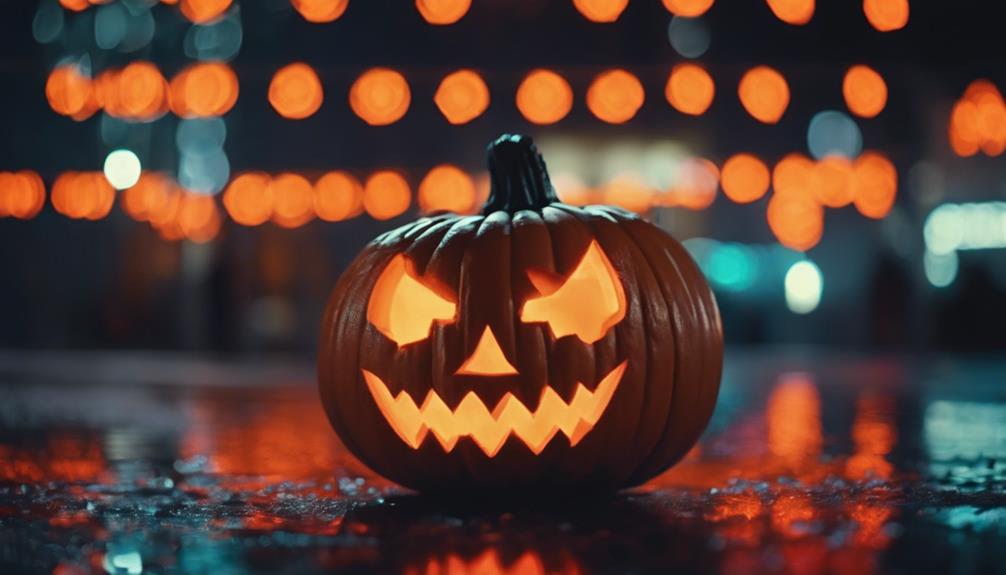
The future of Halloween in Russia remains uncertain amidst ongoing debates surrounding cultural identity. Halloween, this year, mightn't see significant growth in popularity within the country.
Due to its origins as a holiday originating from Western cultures, Halloween faces resistance from some Russian officials who perceive it as a threat to traditional Russian values. This opposition has led to bans on Halloween festivities in certain regions like Sakha (Yakutia), where schools are now emphasizing activities that promote spiritual and patriotic values over the celebration of Halloween.
As Russian schools continue to prioritize cultural and national identity, the future of Halloween in Russia hangs in the balance. Whether Halloween will become more integrated into Russian society or face further pushback remains to be seen, but for now, the holiday's presence in the country remains limited and subject to ongoing cultural debates.
Frequently Asked Questions
Do Russia Celebrate Halloween?
In Russia, Halloween isn't traditionally celebrated, but some urban areas have adopted the holiday. It's becoming more popular in major cities like Moscow and St. Petersburg.
Many Halloween traditions in Russia are adopted from Western culture. Halloween-themed events can be found in urban areas where the holiday is gaining traction.
Despite opposition from some officials, Halloween festivities are embraced by a growing number of Russians.
Which Countries Do Not Celebrate Halloween?
Like a few other nations, Russia doesn't traditionally celebrate Halloween. This holiday is more prevalent in urban areas influenced by Western culture.
Some Russian officials and the Russian Orthodox Church have voiced opposition to Halloween. In certain regions, schools have prohibited Halloween in favor of alternative, often religious-themed events.
The presence of Halloween in Russia has sparked debates about cultural identity and the influence of foreign holidays.
What Is Russia's Biggest Holiday?
Russia's biggest holiday is New Year's Eve, a grand celebration marked by fireworks, festive decorations, and the arrival of Ded Moroz (Father Frost) and Snegurochka (Snow Maiden).
It's a time for gatherings with loved ones, exchanging gifts, and enjoying a lavish feast.
The following week, known as the New Year holidays, offers a chance for relaxation, travel, and engaging in winter activities like ice skating and snow sports.
The festive atmosphere brings renewal, hope, and joy to people across the country.
How Does Japan Celebrate Halloween?
In Japan, Halloween is celebrated with enthusiasm, featuring costume parties, themed events, and elaborate costumes. While trick-or-treating isn't as common, some areas do participate in the tradition.
Japanese people enjoy dressing up and theme parks and shopping centers host festive events. The celebration has gained popularity in urban areas, offering a fun and vibrant atmosphere for those looking to join in the Halloween spirit.
Conclusion
To sum up, while Halloween isn't traditionally celebrated in Russia, there's been a growing interest in the holiday in recent years. According to a survey conducted in 2019, 25% of Russians reported participating in Halloween activities, such as costume parties and pumpkin carving.
This indicates a shift towards cultural acceptance and integration of Halloween in Russian society, paving the way for potential evolution of traditions in the future.
